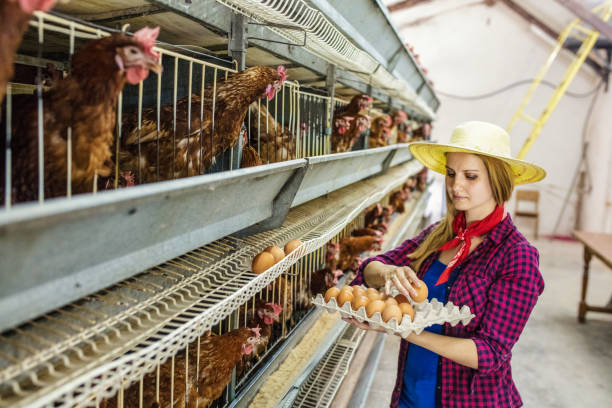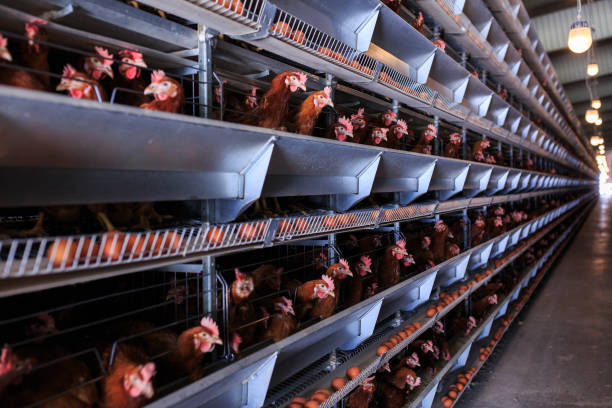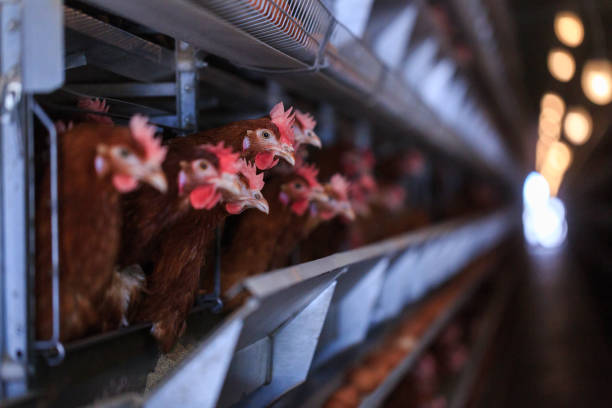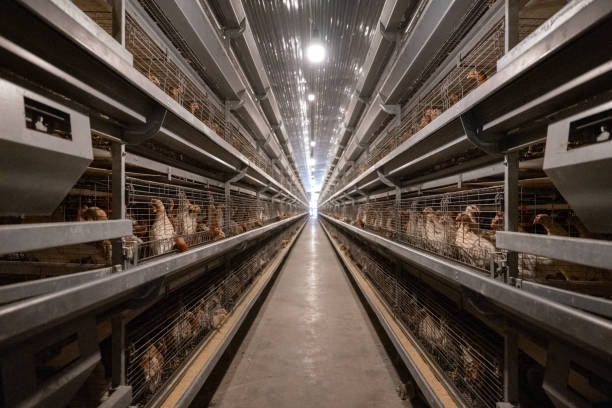
High Capacity 10,000-Bird Poultry Farm Setup
High Capacity 10,000-Bird Poultry Farm Setup
Running a high-capacity poultry farm with 10,000 birds is no small task, but with the right planning, equipment, and management practices, it can be an incredibly profitable and sustainable venture. Whether you’re focusing on egg production or raising broilers for meat, scaling up to this size means you’re stepping into commercial territory—where efficiency, automation, and long-term sustainability matter more than ever. At Livi Mechanical Manufacturing in Zhengzhou, we’ve helped farmers across Asia, Africa, and South America set up modern poultry farms that maximize output while minimizing labor and waste. In this guide, we’ll walk you through everything you need to know about setting up a successful 10,000-bird poultry farm—from housing and equipment selection to feeding strategies and biosecurity.
What Does a 10,000-Bird Operation Actually Look Like?
Before diving into logistics, let’s get a clear picture of what a 10,000-bird setup entails. If you’re raising laying hens, you’re likely looking at around 9,000–10,000 adult hens producing approximately 450–500 eggs per day under optimal conditions. For broiler operations, this number usually refers to one batch of meat birds raised in cycles of six to eight weeks, after which the house is cleaned and restocked. Either way, space planning is critical. We recommend allocating 6,000–7,000 square feet (about 550–650 m²) of floor space for such a flock, depending on whether you go cage-based or deep litter system.
For maximum efficiency and hygiene, most large-scale farms today use automated cage systems. These allow better control over feeding, watering, manure removal, and egg collection. A three-tier or four-tier battery cage system helps optimize vertical space, making it possible to house all 10,000 birds without needing a massive building footprint. Our clients often start with two identical poultry houses of 5,000 birds each, allowing them to stagger production cycles and reduce risk. This also makes maintenance and cleaning easier since one house can be serviced while the other remains active.
At Livi, we design modular systems that grow with your business. That means even if you begin with slightly fewer birds now, your infrastructure can scale up quickly as demand increases. Automation isn’t just a luxury at this level—it’s essential. Manual feeding and watering become impractical and inconsistent when managing so many birds. Instead, chain-feed systems, automatic nipple drinkers, and belt manure removers save hours of daily labor and reduce disease risks by limiting human contact with waste and feed.
Key Equipment and System Integration
When setting up a 10,000-bird poultry farm, the backbone of your operation lies in well-integrated equipment. Let’s break down the core components:
First, poultry cages—this is where durability and design truly matter. Galvanized steel construction prevents rust and withstands years of humid, ammonia-rich environments. Each cage should provide enough room for movement without wasting space. For layers, we suggest 600 cm² per bird; for broilers, aim for 800–1,000 cm². Our egg-laying cages come with sloped floors that automatically roll eggs out to collection trays, preventing breakage and contamination. Meat chicken cages have wider mesh spacing for better ventilation and easy clean-up.
Next, the feeding system. An automatic chain feeder ensures every bird gets the same amount of feed at the same time, reducing competition and stress. The system runs along the front of the cages and can be adjusted in height as chickens grow. With timers and motor controls, a single worker can manage feeding for the entire flock in minutes. Paired with silos or feed trolleys, continuous supply becomes seamless.
Water is equally crucial. Our automatic nipple drinking lines deliver fresh water directly to each cage, cutting spillage and bacterial growth. These systems are connected to pressure regulators and main tanks with filters to keep water clean. No more messy troughs or algae buildup—just consistent hydration.
Then there’s manure management. One of the biggest challenges in high-density farming is keeping ammonia levels low. Daily removal of droppings is non-negotiable. That’s why we install conveyor belts beneath the cages. They run briefly each day, transporting manure outside the house to a composting area or storage pit. This keeps air quality high and footpad health strong, especially important for broilers destined for market.

Finally, don’t overlook climate control. Even in temperate regions, summer heat waves or cold snaps can cause serious drops in productivity. Tunnel ventilation systems with exhaust fans and evaporative cooling pads maintain ideal temperatures year-round. In colder areas, we add supplemental heating using infrared lamps or central boilers. Combined with proper insulation and light controllers, these features ensure stable growth and peak laying performance.
Biosecurity and Daily Management Tips
A large flock attracts attention—not just from buyers, but from pathogens too. Building a secure facility starts with smart location choices: avoid placing your farm near wild bird habitats, busy roads, or other livestock operations. Install fence lines, bird netting, and rodent-proof barriers around the perimeter. Require staff to wear designated boots and clothing, and place disinfectant footbaths at every entry point.
Cleaning protocols must be strict. After each cycle (especially for broilers), do a full wash-down: remove leftover feed, scrub walls and equipment, apply veterinary-grade disinfectants, then allow several days of drying before restocking. Between batches, consider fogging with organic acid sprays to kill airborne viruses.
Daily checks are vital. Walk through both houses every morning and evening. Watch for signs of illness like lethargy, ruffled feathers, or reduced appetite. Monitor water intake—if it drops sharply, something’s wrong. Use data sheets to track egg production, mortality rates, feed consumption, and weight gain weekly. Over time, this info helps fine-tune your operation.
Also, think about waste recycling. Chicken manure is rich in nitrogen and potassium—perfect for organic fertilizer. Many of our customers build simple composting units next to their farms and sell compost to local vegetable growers. Some even invest in biogas digesters later on. Turning waste into revenue streams improves overall profitability.
Partnering With Experts Makes All the Difference
You don’t have to figure everything out alone. At Livi Mechanical, we offer turnkey solutions for 10,000-bird farms, including site assessment, layout planning, installation, training, and after-sales support. Our engineers work with you to customize cage dimensions, choose between manual and fully automatic setups, and integrate power-saving motors and solar-compatible systems where needed.
We’ve shipped complete poultry lines to Nigeria, Vietnam, Peru, and beyond—with multilingual manuals and remote video guidance during setup. Clients tell us our gear lasts twice as long as cheaper alternatives because we weld frames instead of spot-riveting, use thicker gauge wire, and apply triple-layer galvanization. But beyond hardware, we care about results: higher survival rates, lower feed conversion ratios, and happier farmers.
If you’re ready to move forward, reach out and tell us about your project. Share your land size, target species, budget range, and preferred automation level—we’ll send a free proposal with layout drawings, equipment list, and estimated costs. No obligation, just practical advice tailored to your goals. Setting up a 10,000-bird farm is a big step, but with the right partner, it’s totally doable—and potentially life-changing.
Frequently Asked Questions
How much does it cost to set up a 10,000-bird poultry farm?
Initial investment varies by country and automation level, but typically ranges from $40,000 to $80,000. This includes housing construction, cages, feeding/watering systems, ventilation, and basic electrical setup. Fully automated systems sit at the higher end but save significantly on labor over time.
Can I run a 10,000-bird farm alone?
With automation, yes—one or two people can manage daily tasks. However, having additional help during chick placement, cleaning, vaccination, or harvesting will make operations smoother and less stressful.
What type of foundation do I need for poultry cages?

A flat, solid concrete floor is ideal. It allows stable mounting of cages, prevents moisture from rising, and makes cleaning and disinfection much easier. Make sure the slab is properly sloped for drainage.
Is electricity required for all systems?
Most modern systems rely on electricity for feeders, fans, lighting, and egg conveyors. However, solar-powered options or diesel generators can back up off-grid farms. Basic mechanical cages can function manually, but productivity drops without automation.
How often should I clean the house?
For broilers: clean completely between batches (every 6–8 weeks). For layers: perform deep cleaning twice a year, plus regular manure removal and equipment wiping weekly.
Which is better—deep litter or cage system?
Cage systems are more efficient for 10,000-bird setups. They improve hygiene, reduce disease spread, increase stocking density, and automate key processes like egg collection and manure removal. Deep litter requires more labor and has higher pathogen risks at scale.

Do you offer installation support overseas?
Yes, we provide detailed installation videos, diagrams, and engineer consultations via Zoom. For larger projects, we can dispatch technicians internationally to supervise setup and train your team.
How long do your cages last?
Our galvanized cages typically last 12–15 years under normal conditions. Proper maintenance and avoiding corrosive cleaners extend lifespan further.
Can the system be expanded later?
Absolutely. Our designs are modular. You can start with half capacity and add more cages, feed lines, or houses as your business grows.
What breeds work best at this scale?
Popular choices include Hy-Line Brown or ISA Brown for eggs, and Cobb 500 or Ross 308 for broilers. These are widely available, fast-growing, and well-suited to intensive systems. Always source chicks from reputable hatcheries with disease-free certifications.
